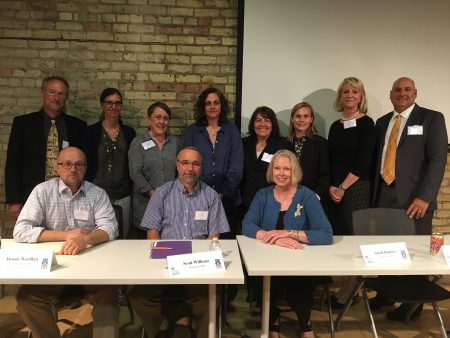Delaware State Historic Preservation Office represented at national meeting of transportation professionals
During the week of July 17, 2017, Delaware State Historic Preservation Office archaeologist Craig Lukezic was in Minneapolis, Minn. for the summer meeting of the Transportation Resource Board’s Standing Committee on Historic and Archaeological Preservation in Transportation. The conference focused on the laws, regulations, policies and procedures for the preservation of historic structures and archeological materials, information and cultures. A division of the National Academies of Sciences, the Transportation Research Board provides innovative, research-based solutions that improve transportation.
Lukezic participated in the conference as a panelist for a session on developing programmatic agreements that streamline Section 106 transportation-related project-reviews while protecting historic properties in accordance with federal law. Along with Delaware Department of Transportation archaeologist Heidi Krofft, Lukezic discussed how Delaware’s 2013 programmatic agreement for highway projects builds on previous work and is based on trust between agencies and experience in negotiating good agreements.
Delaware was one of four states invited to send representatives from their state historic preservation offices to serve on this special panel which was organized by David Clarke, a former Delaware Department of Transportation environmental manager who now serves as the Federal Highway Administration’s federal preservation officer. Approximately 80 people attended the session.

Reflecting on his overall experiences at the conference, Lukezic noted the following:
–In general, the sessions highlighted a wide variety of innovative methods in managing the Section 106 process
–When consulting with Indian tribes, best practices include the need to develop deep, long-term personal relationships; developing a tribal summit where Native people can interact with each other and with representatives of their transportation departments; and developing personalized, targeted e-mails to various tribal communities
–Some states have succeeded in consultation with Indian tribes through best practices which include the need to develop deep, long-term personal relationships; developing a tribal summit where Native people can interact with each other and with representatives of their transportation departments; and developing personalized, targeted e-mails to various tribal communities
–Highway historians have many ways to envision a historic road. For example, a road in Colorado may be significant only on its engineering accomplishments, while a pre-World-War-One coastal highway in Oregon is important for the planned view-sheds. In contrast, Route 66 in the West and the Dixie Highway in Georgia are celebrated as a large-scale linear cultural phenomenon
–The Texas Department of Transportation’s cultural-resource team stands out as leaders in the successful use of media. They use archaeological investigations and other cultural resources as a successful public-relations campaign for the entire agency
–Delaware’s Department of Transportation should not be overshadowed by the transportation departments of large states. DelDOT currently employs an ethic of environmental stewardship that is present throughout the agency and which makes all the difference


